Tonya Macalino's Blog: The Story of Place, page 4
April 1, 2013
The Spirit People of the Lake: Secrets in the Depths
So Spake Mo…
Read enough legends and motifs begin to emerge: the lakes, the rivers, and seas, dangerous mysteries lie beneath those glittering depths, sacred secrets that can reveal the true nature of your very soul.
Take for example a young orphan boy taken in by the chief of a tribe of Blackfeet, a tribe that once roamed Alyse’s Montana home. This young orphan boy stood on the cusp of manhood, eager to take his place among the heroes of his people. He begged of his grandfather to tell him how ...
Read enough legends and motifs begin to emerge: the lakes, the rivers, and seas, dangerous mysteries lie beneath those glittering depths, sacred secrets that can reveal the true nature of your very soul.
Take for example a young orphan boy taken in by the chief of a tribe of Blackfeet, a tribe that once roamed Alyse’s Montana home. This young orphan boy stood on the cusp of manhood, eager to take his place among the heroes of his people. He begged of his grandfather to tell him how ...
Published on April 01, 2013 17:45
March 28, 2013
The Spirit People of the Lake: Secrets in the Depths
SoSpakeMo…
Readenough legends and motifs begin to emerge: thelakes, the rivers, and seas,dangerous mysteries lie beneath thoseglittering depths, sacred secrets thatcan reveal the true nature of yourvery soul.
Takefor example a young orphan boytaken in by the chief of a tribe of Blackfeet, atribe that once roamedAlyse’s Montana home. This young orphan boy stood onthe cusp of manhood,eager to take his place among the heroes of his people. Hebegged of hisgrandfather to tell him how make this cros...
Readenough legends and motifs begin to emerge: thelakes, the rivers, and seas,dangerous mysteries lie beneath thoseglittering depths, sacred secrets thatcan reveal the true nature of yourvery soul.
Takefor example a young orphan boytaken in by the chief of a tribe of Blackfeet, atribe that once roamedAlyse’s Montana home. This young orphan boy stood onthe cusp of manhood,eager to take his place among the heroes of his people. Hebegged of hisgrandfather to tell him how make this cros...
Published on March 28, 2013 11:21
February 6, 2013
The Next Big Thing
I'vejust been tagged in The Next Big Thing, a way for writers to share their
upcoming projects, by my friend and fellow NIWA member, William Hertling. Will
is the author of SMALL PRESS AND INDIE MARKETING—one of my favorite books onmarketing. He’s also written two singularity-focused techno-thrillers: AVOGADROCORP and A.I. APOCOLYPSE.
Youcan read his post about his upcoming work here.
THEINTERVIEW
Whatis your working title of your book?
STEALINGLUCIFER’S DREAMS
EPISODETWO: THE SHADES OF VENICE...
upcoming projects, by my friend and fellow NIWA member, William Hertling. Will
is the author of SMALL PRESS AND INDIE MARKETING—one of my favorite books onmarketing. He’s also written two singularity-focused techno-thrillers: AVOGADROCORP and A.I. APOCOLYPSE.
Youcan read his post about his upcoming work here.
THEINTERVIEW
Whatis your working title of your book?
STEALINGLUCIFER’S DREAMS
EPISODETWO: THE SHADES OF VENICE...
Published on February 06, 2013 09:37
January 31, 2013
A Kitchen Accident Crushes the Rebellion: The Old Woman of the Mortar
So SpakeMo…
On June 14, 1310 the very fabric of the Venetianpolitical institution reached a ripping point. Romehad excommunicated her, leaving herfar-flung merchants with no rights or protections, at the mercy of villains. Thenew aristocracy, risen from the middle class, had maneuvered to close entry toGreat Council to all save those who had previously served, ending the traditionof the common citizens of Venice holding seats and therefore having avoice in their own governance.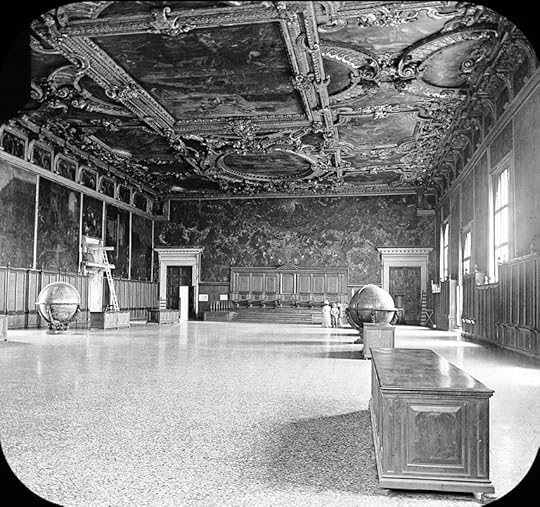 source: Br...
source: Br...
On June 14, 1310 the very fabric of the Venetianpolitical institution reached a ripping point. Romehad excommunicated her, leaving herfar-flung merchants with no rights or protections, at the mercy of villains. Thenew aristocracy, risen from the middle class, had maneuvered to close entry toGreat Council to all save those who had previously served, ending the traditionof the common citizens of Venice holding seats and therefore having avoice in their own governance.
 source: Br...
source: Br...
Published on January 31, 2013 22:05
A Kitchen Accident Takes Down the Rebellion: The Old Woman of the Mortar
So SpakeMo…
On June 14, 1310 the very fabric of the Venetianpolitical institution reached a ripping point. Romehad excommunicated her, leaving herfar-flung merchants with no rights or protections, at the mercy of villains. Thenew aristocracy, risen from the middle class, had maneuvered to close entry toGreat Council to all save those who had previously served, ending the traditionof the common citizens of Venice holding seats and therefore having avoice in their own governance. source: Br...
source: Br...
On June 14, 1310 the very fabric of the Venetianpolitical institution reached a ripping point. Romehad excommunicated her, leaving herfar-flung merchants with no rights or protections, at the mercy of villains. Thenew aristocracy, risen from the middle class, had maneuvered to close entry toGreat Council to all save those who had previously served, ending the traditionof the common citizens of Venice holding seats and therefore having avoice in their own governance.
 source: Br...
source: Br...
Published on January 31, 2013 22:05
December 31, 2012
A Child in the Shadow of an Effigy, Ada Lovelace: The Enchantress of Numbers, The Mother of Computer Programming
"Is thy face like thy mother's, my fair child!
ADA! sole daughter of my house and heart?
When last I saw thy young blue eyes they smiled,
And then we parted…"
So Spake Mo…
The spectre of Lord Byron lingers in the canals and corridors of Venice. Truly the atmosphere of the ancient labyrinth of stone and water suits the tenor the great poet so often put to paper: a romantic melancholy cloaking a secret and painful guilt, a melancholy increased by the strains of an idealized, pure love. And do those villas, those crumbled holy places not also mirror the proud defiance of that same Byronic hero? But that spectre carries forward outside the imagined walkways of the Venice of your mind, draws up, draws outward into the digital mind of the computer through which you read this.
But that spectre carries forward outside the imagined walkways of the Venice of your mind, draws up, draws outward into the digital mind of the computer through which you read this.
Through the lingering ghost of his only legitimate daughter, Ada Lovelace.
Young Ada was but a month old when she last laid eyes on her father, a mere eight years old when he perished in faraway Greece and yet he was a constant formative presence in her life. How could she help but be ever aware of a man whose fame and infamy were preserved in the epic bestselling books of poetry of her time, in the heroic statues on distant shores, in the memories of his friends who survived him and who surrounded her in the social circles of London’s elite.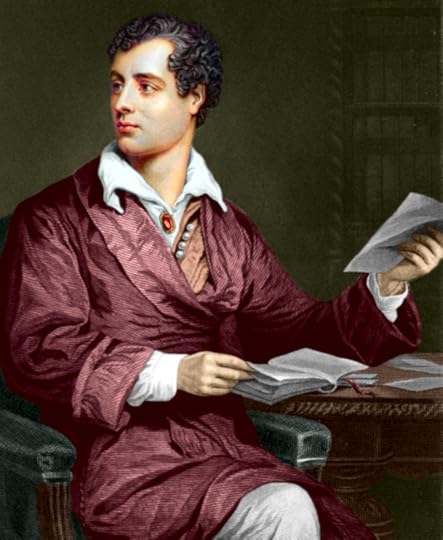 And of a man who was preserved in her own mother’s memory as an affliction to be
And of a man who was preserved in her own mother’s memory as an affliction to be
guarded against.
From very early on, the former Lady Byron sought to keep Lord Byron’s influence from her daughter, schooling her in music and mathematics in an effort to guard
against the “dangerous poetic tendencies” she might inherit.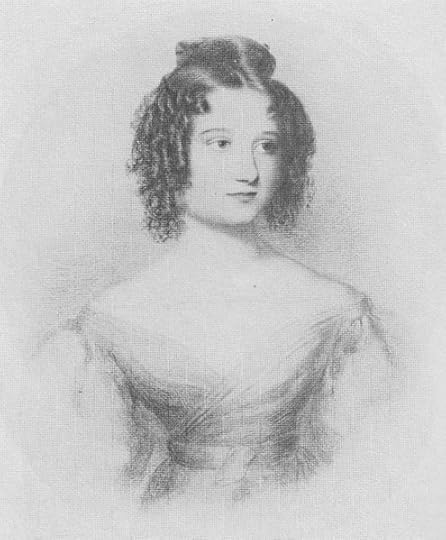 And Lady Lovelace, our dear Ada, excelled in her mother’s favored field, so
And Lady Lovelace, our dear Ada, excelled in her mother’s favored field, so
much so that the father of the computer, Charles Babbage, dubbed her “The
Enchantress of Numbers” and beseeched her to translate a paper on his
historically pivotal Analytical Engine. She added her own notes to this
translation over the course of nine months and therein lies her own quiet
fame:
The Enchantress of Numbers became the mother of computer programming, the inventor of the algorithm. And with her father’s omnipresence in her life, Ada was able to do something that
And with her father’s omnipresence in her life, Ada was able to do something that
Babbage was not, she was able to envision the Analytic Engine as something
greater than a clockwork calculator, she envisioned a machine that could render
music, even images via numeric analysis. She envisioned in 1842 the machine you
interface with right now: the computer. She would not see the Analytical Engine built. Ada died at the same age as her father, a brief flicker at the age of 36. She requested to be entombed beside her father, the man she’d never known, the man whose genius helped shape her own.
She would not see the Analytical Engine built. Ada died at the same age as her father, a brief flicker at the age of 36. She requested to be entombed beside her father, the man she’d never known, the man whose genius helped shape her own.
So Spake Me…
How odd it must have been to grow up as the daughter of the world’s first celebrity.
To be simultaneously directed toward and against his idolized heroism and immortalized infamy. And to have the only connection with the truth of the matter come to you through the stylized verse of his poetry and the stylized memories of his former contemporaries.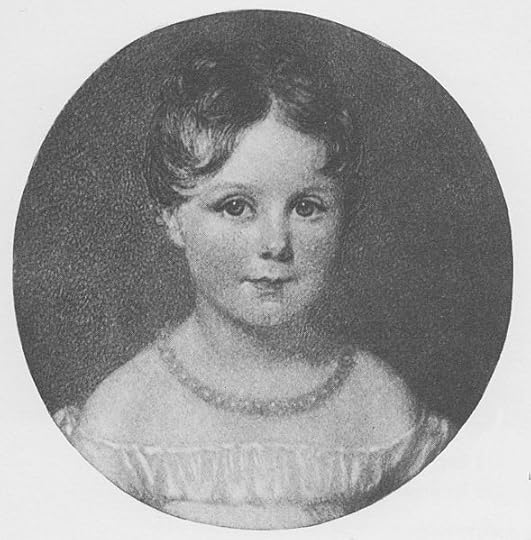 He was dead long before she was old enough to synthesize a truth of her own. His
He was dead long before she was old enough to synthesize a truth of her own. His
last, incomplete letter: a note to her mother thanking her for news of their
daughter.
Perhaps that was a comfort of some kind.
For me, the melancholy bewilderment lingers in learning their story on so many
fronts.
The first: Genius and vision was not the only inheritance he left her. By my brief
reading, it seems he bequeathed her his struggles with mental illness as well.
This was regarded very differently in that day. The letters I skimmed seem to
take it with some indulgence as a plague of the truly brilliant. But as family
members, it could make life very difficult, even dangerous. And there was no
help for it in those days.
The second: That I never knew her story. That her amazing contribution to the
progress of our society and our technology was not even a footnote in my education. I have a vague memory of learning of Charles Babbage, but nothing of
Ada Lovelace. Nothing.
The third: That she stands as a bridge between two painful bits of heritage: her
father removed himself from England in part to free himself from the deadly laws
against his bisexuality and Alan Turing (of Turing Machine fame) who based his
work on computers on Lovelace’s work – was chemically castrated for his
homosexuality. Two genius persecuted for who they loved leaves an inevitable
shadow where awe and amazement should reside for the greatness of their
lives.
So let this be my brief tribute…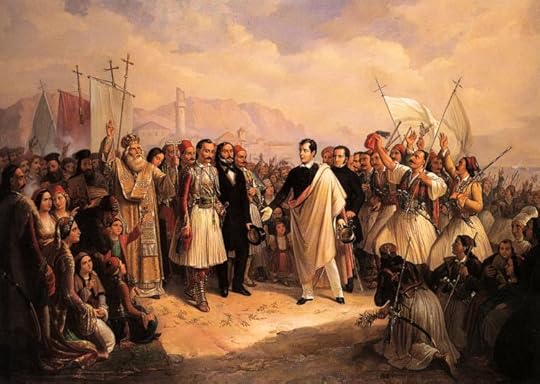 To the man who lit the waters of the Grand Canal with his torch as he swam in the depths of the night and our hearts with the torch of his pen:
To the man who lit the waters of the Grand Canal with his torch as he swam in the depths of the night and our hearts with the torch of his pen:
But I have lived, and have not lived in vain:
My mind may lose its force, my blood its fire,
And my frame perish even in conquering pain,
But there is that within me which shall tire
Torture and Time, and breathe when I expire [.] And to the woman who lit the path to science and discovery, to music and beauty as her “Analytical Engine weaves algebraic patterns, just as the Jacquard loom weaves flowers and leaves.” No matter what form that luminous engine may ultimately take.
And to the woman who lit the path to science and discovery, to music and beauty as her “Analytical Engine weaves algebraic patterns, just as the Jacquard loom weaves flowers and leaves.” No matter what form that luminous engine may ultimately take.
Further Reading
Ada Lovelace: Enchantress of Numbers
Ada Byron, Countess of Lovelace
Lord Byron (George Gordon)
1840s – Ada Lovelace (Byron’s daughter!) becomes world’s first programmer
History’s Great Computer Eccentrics
ADA! sole daughter of my house and heart?
When last I saw thy young blue eyes they smiled,
And then we parted…"
So Spake Mo…
The spectre of Lord Byron lingers in the canals and corridors of Venice. Truly the atmosphere of the ancient labyrinth of stone and water suits the tenor the great poet so often put to paper: a romantic melancholy cloaking a secret and painful guilt, a melancholy increased by the strains of an idealized, pure love. And do those villas, those crumbled holy places not also mirror the proud defiance of that same Byronic hero?
 But that spectre carries forward outside the imagined walkways of the Venice of your mind, draws up, draws outward into the digital mind of the computer through which you read this.
But that spectre carries forward outside the imagined walkways of the Venice of your mind, draws up, draws outward into the digital mind of the computer through which you read this.Through the lingering ghost of his only legitimate daughter, Ada Lovelace.
Young Ada was but a month old when she last laid eyes on her father, a mere eight years old when he perished in faraway Greece and yet he was a constant formative presence in her life. How could she help but be ever aware of a man whose fame and infamy were preserved in the epic bestselling books of poetry of her time, in the heroic statues on distant shores, in the memories of his friends who survived him and who surrounded her in the social circles of London’s elite.
 And of a man who was preserved in her own mother’s memory as an affliction to be
And of a man who was preserved in her own mother’s memory as an affliction to be guarded against.
From very early on, the former Lady Byron sought to keep Lord Byron’s influence from her daughter, schooling her in music and mathematics in an effort to guard
against the “dangerous poetic tendencies” she might inherit.
 And Lady Lovelace, our dear Ada, excelled in her mother’s favored field, so
And Lady Lovelace, our dear Ada, excelled in her mother’s favored field, so much so that the father of the computer, Charles Babbage, dubbed her “The
Enchantress of Numbers” and beseeched her to translate a paper on his
historically pivotal Analytical Engine. She added her own notes to this
translation over the course of nine months and therein lies her own quiet
fame:
The Enchantress of Numbers became the mother of computer programming, the inventor of the algorithm.
 And with her father’s omnipresence in her life, Ada was able to do something that
And with her father’s omnipresence in her life, Ada was able to do something that Babbage was not, she was able to envision the Analytic Engine as something
greater than a clockwork calculator, she envisioned a machine that could render
music, even images via numeric analysis. She envisioned in 1842 the machine you
interface with right now: the computer.
 She would not see the Analytical Engine built. Ada died at the same age as her father, a brief flicker at the age of 36. She requested to be entombed beside her father, the man she’d never known, the man whose genius helped shape her own.
She would not see the Analytical Engine built. Ada died at the same age as her father, a brief flicker at the age of 36. She requested to be entombed beside her father, the man she’d never known, the man whose genius helped shape her own.So Spake Me…
How odd it must have been to grow up as the daughter of the world’s first celebrity.
To be simultaneously directed toward and against his idolized heroism and immortalized infamy. And to have the only connection with the truth of the matter come to you through the stylized verse of his poetry and the stylized memories of his former contemporaries.
 He was dead long before she was old enough to synthesize a truth of her own. His
He was dead long before she was old enough to synthesize a truth of her own. His last, incomplete letter: a note to her mother thanking her for news of their
daughter.
Perhaps that was a comfort of some kind.
For me, the melancholy bewilderment lingers in learning their story on so many
fronts.
The first: Genius and vision was not the only inheritance he left her. By my brief
reading, it seems he bequeathed her his struggles with mental illness as well.
This was regarded very differently in that day. The letters I skimmed seem to
take it with some indulgence as a plague of the truly brilliant. But as family
members, it could make life very difficult, even dangerous. And there was no
help for it in those days.
The second: That I never knew her story. That her amazing contribution to the
progress of our society and our technology was not even a footnote in my education. I have a vague memory of learning of Charles Babbage, but nothing of
Ada Lovelace. Nothing.
The third: That she stands as a bridge between two painful bits of heritage: her
father removed himself from England in part to free himself from the deadly laws
against his bisexuality and Alan Turing (of Turing Machine fame) who based his
work on computers on Lovelace’s work – was chemically castrated for his
homosexuality. Two genius persecuted for who they loved leaves an inevitable
shadow where awe and amazement should reside for the greatness of their
lives.
So let this be my brief tribute…
 To the man who lit the waters of the Grand Canal with his torch as he swam in the depths of the night and our hearts with the torch of his pen:
To the man who lit the waters of the Grand Canal with his torch as he swam in the depths of the night and our hearts with the torch of his pen: But I have lived, and have not lived in vain:
My mind may lose its force, my blood its fire,
And my frame perish even in conquering pain,
But there is that within me which shall tire
Torture and Time, and breathe when I expire [.]
 And to the woman who lit the path to science and discovery, to music and beauty as her “Analytical Engine weaves algebraic patterns, just as the Jacquard loom weaves flowers and leaves.” No matter what form that luminous engine may ultimately take.
And to the woman who lit the path to science and discovery, to music and beauty as her “Analytical Engine weaves algebraic patterns, just as the Jacquard loom weaves flowers and leaves.” No matter what form that luminous engine may ultimately take.Further Reading
Ada Lovelace: Enchantress of Numbers
Ada Byron, Countess of Lovelace
Lord Byron (George Gordon)
1840s – Ada Lovelace (Byron’s daughter!) becomes world’s first programmer
History’s Great Computer Eccentrics
Published on December 31, 2012 17:15
November 28, 2012
Saving Our Stories: Aldus Manutius and the Technology of Storytelling
So Spake Mo…
Teaching, that noble profession, has a curious effect on a curious mind. The rigorous study required to instruct, the enthusiasm necessary to convey that knowledge past the resistance of the pupil, all this can create a passion for a subject strong enough to change the world.
For a certain educator from Renaissance Italy, that passion drove him to a
late-life career change from tutor to the wealthy to publisher. Like a
modern-day Silicon Valleyentrepreneur, Aldus Manutius dropped his former life
and with his investors launched a business based on a risky new technology:
moveable type. Aldus did this with the goal of preserving the Greek classics in
their original language, providing his contemporaries with access to the ancient
wisdom that he and his fellow humanist so valued. source: Bernardino Loschi In his Venetian workshop off the Campo San Agostin, this ambitious entrepreneur employed his“software developers” in the task of translating the flowing and unruly written language of the Greeks into a standardized type – an enormous architecture to create and then hand carve from a language once calculated to posses approximately 1,300 accent and letter combinations. Above the door of this workshop the frantic placard read:
source: Bernardino Loschi In his Venetian workshop off the Campo San Agostin, this ambitious entrepreneur employed his“software developers” in the task of translating the flowing and unruly written language of the Greeks into a standardized type – an enormous architecture to create and then hand carve from a language once calculated to posses approximately 1,300 accent and letter combinations. Above the door of this workshop the frantic placard read:
“Whoever you are, Aldus earnestly begs you to state your business in the fewest words possible and begone, unless, like Hercules to weary Atlas, you would lend a helping hand. There will always be enough work for you and all who pass this
way.”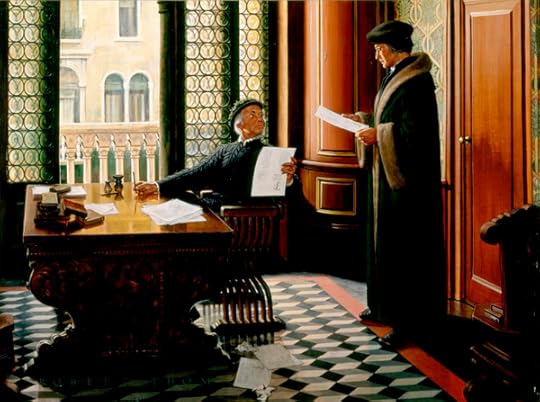 source: Robert Alan Thom And these early, innovative technologies—like ours today—did not sell cheaply. But the market was ripe and the early adopters helped Aldine Press survive first a glut in the publications market and then the instability of the wartime market.
source: Robert Alan Thom And these early, innovative technologies—like ours today—did not sell cheaply. But the market was ripe and the early adopters helped Aldine Press survive first a glut in the publications market and then the instability of the wartime market.
But then so did Aldus’s entrepreneurial mind. Because this is when he was pushed to adapt his products to meet the needs of the greater marketplace.
The “libelli portatiles” were born. source: Newberry Library Adapting the devotional print format of the octvo (eighth sheet), stripping away the traditional weight of academic commentaries, and adding Aldine Press’s latest innovation: the new compact calligraphy of the italic, Aldus created the modern pocketbook, making his beloved classics available to the mobile class of Renaissance humanists.
source: Newberry Library Adapting the devotional print format of the octvo (eighth sheet), stripping away the traditional weight of academic commentaries, and adding Aldine Press’s latest innovation: the new compact calligraphy of the italic, Aldus created the modern pocketbook, making his beloved classics available to the mobile class of Renaissance humanists.
Aldus released books from the study or the library and set them free to entertain and inspire the wider audience of the educated upper class.
And eventually, the rest of us.
So, from all of us who treasure that book we cradle by a fire on a chill winter night, or even the e-reader we thread through our fingers as we dangle from a handhold on the train, thank you, Aldus Manutius… Aldine Press Publisher’s Mark Festina Lente: “make haste slowly” (source: Dzembayz) So Spake Me…
Aldine Press Publisher’s Mark Festina Lente: “make haste slowly” (source: Dzembayz) So Spake Me…
In any group, any culture, it is the stories that bind us. They hold our teachings, the collective intellectual and emotional knowledge that allow us to relate to each other and to the world around us with the same recognition of ideas, the same concepts of right and wrong.
It is no wonder that in our relentless drive to tinker and to create that we embarked in our infant societies on the odyssey of developing tools to capture and pass along these stories from person to person and from generation to generation.
We began simply. source: LRBurdak Smears of crude paint changed to artistically stained stone that was to endure nearly 40,000 years.
source: LRBurdak Smears of crude paint changed to artistically stained stone that was to endure nearly 40,000 years.
Slowly, our representations of the world became representations of ideas and those representations turned to a symbology of sound. We tinkered, we created, we evolved our ingenious technology of story from the previous generation’s and gave it over to the next to continue the work.
Fingers soaked in plant juices against limestone…to chisels against marble…to quill against parchment. Our wonders of innovation.
We were relentless. source: Dmsdgold Rigid parchment changed to fine vellum, monks to publishers hand-carving their typeset works of art in loving detail. Weighty tomes lifted from their library podiums and settled into the palms of intellectuals.
source: Dmsdgold Rigid parchment changed to fine vellum, monks to publishers hand-carving their typeset works of art in loving detail. Weighty tomes lifted from their library podiums and settled into the palms of intellectuals.
Faster now, always faster. source: UserFA2010 Wood punches turned metal, turned to fleeting electrons, massive reels of pulped paper transformed to light against polarized glass.
source: UserFA2010 Wood punches turned metal, turned to fleeting electrons, massive reels of pulped paper transformed to light against polarized glass.
We reach further and further even now. source: jblyberg Pigmented pixels flashing their positive or negative colors to illuminate a modern manuscript. Pages beyond counting fit easily into a pocket, a purse.
source: jblyberg Pigmented pixels flashing their positive or negative colors to illuminate a modern manuscript. Pages beyond counting fit easily into a pocket, a purse.
So many stories.
We are so many voices now. More to know than can be drunk in one lifetime. All available with the click of a button, 40,000 years of human wisdom and folly. 40,000 years of clever minds developing new technologies to carry our stories forward, to preserve them, to save the soul of our society for children existing in an unimaginable distant future.
We storytellers, we tinkerers, we are not capable of stasis. source: Photo Extremist We bring change in our wake. The thoughts, the technologies of the times before ours were not more pure than our own, but rather left the same wake in seas of their days as we complain of and revel in now.
source: Photo Extremist We bring change in our wake. The thoughts, the technologies of the times before ours were not more pure than our own, but rather left the same wake in seas of their days as we complain of and revel in now.
So leave a trailing electric field across the glass as you flip through Aldus Manutius’s beloved Aristotle, paint motion in the invisible glow of an infrared laser as you wander amongst the long-ago revelers at a Shakespearean play. Gaze with fascination at the broad and the narrow gap between the times and minds that brought us here.
And imagine with wonder where our hands will reach to when we stand on the shoulders of 40,000 years worth of genius.
Further Reading:
Aldus Manutius: Printer and Publisher of Renaissance Venice
The Rough Guide to Venice and the Veneto
Aldus Manutius, scholar-printer (c.1445-1515)
Answers: Aldus Manutius
Teaching, that noble profession, has a curious effect on a curious mind. The rigorous study required to instruct, the enthusiasm necessary to convey that knowledge past the resistance of the pupil, all this can create a passion for a subject strong enough to change the world.
For a certain educator from Renaissance Italy, that passion drove him to a
late-life career change from tutor to the wealthy to publisher. Like a
modern-day Silicon Valleyentrepreneur, Aldus Manutius dropped his former life
and with his investors launched a business based on a risky new technology:
moveable type. Aldus did this with the goal of preserving the Greek classics in
their original language, providing his contemporaries with access to the ancient
wisdom that he and his fellow humanist so valued.
 source: Bernardino Loschi In his Venetian workshop off the Campo San Agostin, this ambitious entrepreneur employed his“software developers” in the task of translating the flowing and unruly written language of the Greeks into a standardized type – an enormous architecture to create and then hand carve from a language once calculated to posses approximately 1,300 accent and letter combinations. Above the door of this workshop the frantic placard read:
source: Bernardino Loschi In his Venetian workshop off the Campo San Agostin, this ambitious entrepreneur employed his“software developers” in the task of translating the flowing and unruly written language of the Greeks into a standardized type – an enormous architecture to create and then hand carve from a language once calculated to posses approximately 1,300 accent and letter combinations. Above the door of this workshop the frantic placard read:“Whoever you are, Aldus earnestly begs you to state your business in the fewest words possible and begone, unless, like Hercules to weary Atlas, you would lend a helping hand. There will always be enough work for you and all who pass this
way.”
 source: Robert Alan Thom And these early, innovative technologies—like ours today—did not sell cheaply. But the market was ripe and the early adopters helped Aldine Press survive first a glut in the publications market and then the instability of the wartime market.
source: Robert Alan Thom And these early, innovative technologies—like ours today—did not sell cheaply. But the market was ripe and the early adopters helped Aldine Press survive first a glut in the publications market and then the instability of the wartime market.But then so did Aldus’s entrepreneurial mind. Because this is when he was pushed to adapt his products to meet the needs of the greater marketplace.
The “libelli portatiles” were born.
 source: Newberry Library Adapting the devotional print format of the octvo (eighth sheet), stripping away the traditional weight of academic commentaries, and adding Aldine Press’s latest innovation: the new compact calligraphy of the italic, Aldus created the modern pocketbook, making his beloved classics available to the mobile class of Renaissance humanists.
source: Newberry Library Adapting the devotional print format of the octvo (eighth sheet), stripping away the traditional weight of academic commentaries, and adding Aldine Press’s latest innovation: the new compact calligraphy of the italic, Aldus created the modern pocketbook, making his beloved classics available to the mobile class of Renaissance humanists. Aldus released books from the study or the library and set them free to entertain and inspire the wider audience of the educated upper class.
And eventually, the rest of us.
So, from all of us who treasure that book we cradle by a fire on a chill winter night, or even the e-reader we thread through our fingers as we dangle from a handhold on the train, thank you, Aldus Manutius…
 Aldine Press Publisher’s Mark Festina Lente: “make haste slowly” (source: Dzembayz) So Spake Me…
Aldine Press Publisher’s Mark Festina Lente: “make haste slowly” (source: Dzembayz) So Spake Me…In any group, any culture, it is the stories that bind us. They hold our teachings, the collective intellectual and emotional knowledge that allow us to relate to each other and to the world around us with the same recognition of ideas, the same concepts of right and wrong.
It is no wonder that in our relentless drive to tinker and to create that we embarked in our infant societies on the odyssey of developing tools to capture and pass along these stories from person to person and from generation to generation.
We began simply.
 source: LRBurdak Smears of crude paint changed to artistically stained stone that was to endure nearly 40,000 years.
source: LRBurdak Smears of crude paint changed to artistically stained stone that was to endure nearly 40,000 years.Slowly, our representations of the world became representations of ideas and those representations turned to a symbology of sound. We tinkered, we created, we evolved our ingenious technology of story from the previous generation’s and gave it over to the next to continue the work.
Fingers soaked in plant juices against limestone…to chisels against marble…to quill against parchment. Our wonders of innovation.
We were relentless.
 source: Dmsdgold Rigid parchment changed to fine vellum, monks to publishers hand-carving their typeset works of art in loving detail. Weighty tomes lifted from their library podiums and settled into the palms of intellectuals.
source: Dmsdgold Rigid parchment changed to fine vellum, monks to publishers hand-carving their typeset works of art in loving detail. Weighty tomes lifted from their library podiums and settled into the palms of intellectuals.Faster now, always faster.
 source: UserFA2010 Wood punches turned metal, turned to fleeting electrons, massive reels of pulped paper transformed to light against polarized glass.
source: UserFA2010 Wood punches turned metal, turned to fleeting electrons, massive reels of pulped paper transformed to light against polarized glass. We reach further and further even now.
 source: jblyberg Pigmented pixels flashing their positive or negative colors to illuminate a modern manuscript. Pages beyond counting fit easily into a pocket, a purse.
source: jblyberg Pigmented pixels flashing their positive or negative colors to illuminate a modern manuscript. Pages beyond counting fit easily into a pocket, a purse.So many stories.
We are so many voices now. More to know than can be drunk in one lifetime. All available with the click of a button, 40,000 years of human wisdom and folly. 40,000 years of clever minds developing new technologies to carry our stories forward, to preserve them, to save the soul of our society for children existing in an unimaginable distant future.
We storytellers, we tinkerers, we are not capable of stasis.
 source: Photo Extremist We bring change in our wake. The thoughts, the technologies of the times before ours were not more pure than our own, but rather left the same wake in seas of their days as we complain of and revel in now.
source: Photo Extremist We bring change in our wake. The thoughts, the technologies of the times before ours were not more pure than our own, but rather left the same wake in seas of their days as we complain of and revel in now.So leave a trailing electric field across the glass as you flip through Aldus Manutius’s beloved Aristotle, paint motion in the invisible glow of an infrared laser as you wander amongst the long-ago revelers at a Shakespearean play. Gaze with fascination at the broad and the narrow gap between the times and minds that brought us here.
And imagine with wonder where our hands will reach to when we stand on the shoulders of 40,000 years worth of genius.
Further Reading:
Aldus Manutius: Printer and Publisher of Renaissance Venice
The Rough Guide to Venice and the Veneto
Aldus Manutius, scholar-printer (c.1445-1515)
Answers: Aldus Manutius
Published on November 28, 2012 23:01
November 26, 2012
Discount Not the Dreamer
So SpakeMo…
There is much to be said for the way the life of the child molds the mind of the man he will become. Once there was a little Russian boy whose joy was flying down hills in his toboggan…until he caught a cold, not a cold, but the deadly scarlet fever. He fought, he survived, but at age 10 he was left near deaf and school became such a struggle that he was ultimately turned out at age 14.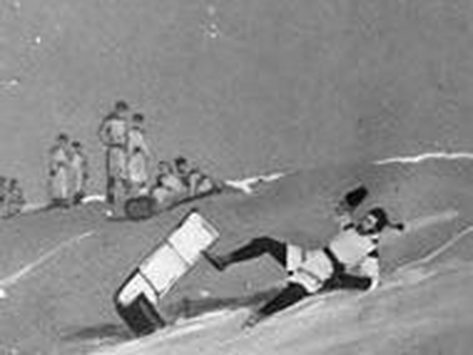 source: Wikimedia From hence forward, books became his teachers.
source: Wikimedia From hence forward, books became his teachers.
And they drove him. At 16, they pushed him so obviously that his parents sent him to Moscowso that he might immerse himself in the Chertkovskaya Library, an Aladdin’s cave of intellectual wonders. As one of 18 children, the family could do little to support his explorations, but so caught up in his studies was he that a simple diet of black bread left him enough to fund his studies and experiments.
He had the time—and the space—to dream. source: WikiMedia At first, he put his ideas to paper in the form of science fiction, more thought-experiment than character study. Quickly, his passion for rigorous study overtook him and he published his first scientific paper near the age of 23. From there, the little boy from Kagula went on to create more than 400 works, dreams. Riding on the wings of another dreamer, Jules Verne, he was inspired compose 90 of those works on space travel, including rockets with steering thrusters, multistage boosters, space stations, airlocks for exiting and entering spaceships while in space, and closed-cycle bio-systems for food and oxygen in space colonies.
source: WikiMedia At first, he put his ideas to paper in the form of science fiction, more thought-experiment than character study. Quickly, his passion for rigorous study overtook him and he published his first scientific paper near the age of 23. From there, the little boy from Kagula went on to create more than 400 works, dreams. Riding on the wings of another dreamer, Jules Verne, he was inspired compose 90 of those works on space travel, including rockets with steering thrusters, multistage boosters, space stations, airlocks for exiting and entering spaceships while in space, and closed-cycle bio-systems for food and oxygen in space colonies. 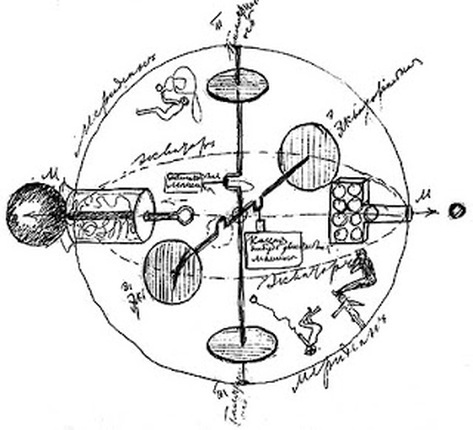 Tsiolkovsky's Spaceship, source: WikiMedia While the rest of the world played with the precursor to the automobile, he was colonizing the stars.
Tsiolkovsky's Spaceship, source: WikiMedia While the rest of the world played with the precursor to the automobile, he was colonizing the stars.
With the inspiration of the Eiffel Tower, our dreamer roughed out the calculations for the geostationary altitude necessary to operate a “celestial castle,” an elevator operating within a tower that could deliver man to space. While his calculations also found the tower itself an impossibility, the idea remained…
…The Space Elevator. source: (c) LiftPort Group So Spake Me…
source: (c) LiftPort Group So Spake Me…
Konstantin Tsiolkovsky dreamed his dreams from 1857 to 1935. He is remembered as the Grandfather of Soviet Rocketry and the Father of Spaceflight, as the man whose work inspired those who finally did take us to the moon, including the father of America’s own space program, Wernher von Braun.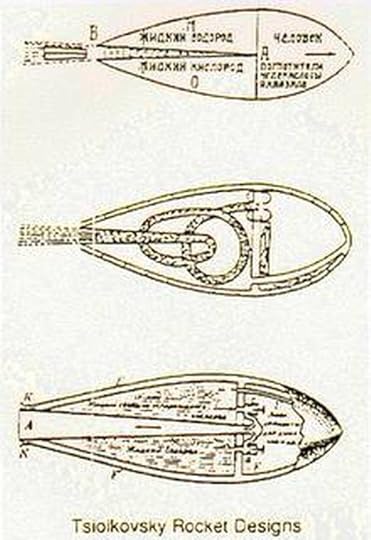 Like Descartes with the childhood illness that removed him from society’s prescribed daily routine and allowed his mind to roam far and wide (leading to analytic geometry and the foundations of modern philosophy), Tsiolkovsky’s willingness to seize this early intellectual freedom led him to explore ideas that had no obvious application at the time. Scientific dreams. Dreams that became physical science, that took on reality much sooner than he could possibly have imagined.
Like Descartes with the childhood illness that removed him from society’s prescribed daily routine and allowed his mind to roam far and wide (leading to analytic geometry and the foundations of modern philosophy), Tsiolkovsky’s willingness to seize this early intellectual freedom led him to explore ideas that had no obvious application at the time. Scientific dreams. Dreams that became physical science, that took on reality much sooner than he could possibly have imagined.  source: (c) AGeekMom Were all 400 of his ideas the stuff of legend? Not necessarily. But in a time when humans were experimenting with awkward steam-powered cars, he was developing the sleek Tsiolkovsky rocket equation which rocket scientists still use today.
source: (c) AGeekMom Were all 400 of his ideas the stuff of legend? Not necessarily. But in a time when humans were experimenting with awkward steam-powered cars, he was developing the sleek Tsiolkovsky rocket equation which rocket scientists still use today.  Tsiolkovsky Monumet, source: (c) Vladimir OKC Dreaming matters. The dreams of Jules Verne who sparked Tsiolkovsky’s imagination. The dreams of Arthur C. Clarke whose further dreams of that space elevator would spark the curiosity of Jerome Pearson of NASA, who in parallel with Yuri Artsutanov of Russia, would pursue the idea into practical mainstream science.
Tsiolkovsky Monumet, source: (c) Vladimir OKC Dreaming matters. The dreams of Jules Verne who sparked Tsiolkovsky’s imagination. The dreams of Arthur C. Clarke whose further dreams of that space elevator would spark the curiosity of Jerome Pearson of NASA, who in parallel with Yuri Artsutanov of Russia, would pursue the idea into practical mainstream science.  source: WikiMedia Then on to Bradley Edwards who secured NASA funding for the first serious feasibility study.
source: WikiMedia Then on to Bradley Edwards who secured NASA funding for the first serious feasibility study.
And from there the dream takes flight. source: (c) Michael Laine In 2006, Michael Laine assembles The LiftPort Group to develop the necessary technologies. The economy crash-lands the project for a period, but Laine’s group rises from the ashes with a successful 2012 Kickstarter campaign.
source: (c) Michael Laine In 2006, Michael Laine assembles The LiftPort Group to develop the necessary technologies. The economy crash-lands the project for a period, but Laine’s group rises from the ashes with a successful 2012 Kickstarter campaign.  source: (c) LiftPort Group And they are not alone. Tech giant Google joins the race in 2011 and the Obayashi Corporation of Japan joins in 2012 with claims of a completed project by 2040.
source: (c) LiftPort Group And they are not alone. Tech giant Google joins the race in 2011 and the Obayashi Corporation of Japan joins in 2012 with claims of a completed project by 2040.
In SPECTRE OF INTENTION,
the date stamp on Kaitlin’s contract is May 13, 2048.
So here’s to a little Russian boy with his toboggan and a spark that has flown so far:
Discount not the dreamers, for they deliver us into tomorrow. source: (c) LiftPort Group “The space elevator will be built about 50 years after everyone stops laughing.”
source: (c) LiftPort Group “The space elevator will be built about 50 years after everyone stops laughing.”
- Arthur C. Clarke, 1985
“It’ll be built 10 years after everybody stops laughing…and I think they have stopped laughing.”
- Arthur C. Clarke, 2003, 2nd Annual Space Elevator Conference, New Mexico
References and Further Reading
The Space Elevator: “Thought Experiment,” or Key to the Universe (Arthur C. Clarke)
Wikipedia Space Elevator Entry
Konstantin Tsiolkovsky
LiftPort Group Kickstarter Campaign
Konstantin’s Beanstalk—the Space Elevator
There is much to be said for the way the life of the child molds the mind of the man he will become. Once there was a little Russian boy whose joy was flying down hills in his toboggan…until he caught a cold, not a cold, but the deadly scarlet fever. He fought, he survived, but at age 10 he was left near deaf and school became such a struggle that he was ultimately turned out at age 14.
 source: Wikimedia From hence forward, books became his teachers.
source: Wikimedia From hence forward, books became his teachers.And they drove him. At 16, they pushed him so obviously that his parents sent him to Moscowso that he might immerse himself in the Chertkovskaya Library, an Aladdin’s cave of intellectual wonders. As one of 18 children, the family could do little to support his explorations, but so caught up in his studies was he that a simple diet of black bread left him enough to fund his studies and experiments.
He had the time—and the space—to dream.
 source: WikiMedia At first, he put his ideas to paper in the form of science fiction, more thought-experiment than character study. Quickly, his passion for rigorous study overtook him and he published his first scientific paper near the age of 23. From there, the little boy from Kagula went on to create more than 400 works, dreams. Riding on the wings of another dreamer, Jules Verne, he was inspired compose 90 of those works on space travel, including rockets with steering thrusters, multistage boosters, space stations, airlocks for exiting and entering spaceships while in space, and closed-cycle bio-systems for food and oxygen in space colonies.
source: WikiMedia At first, he put his ideas to paper in the form of science fiction, more thought-experiment than character study. Quickly, his passion for rigorous study overtook him and he published his first scientific paper near the age of 23. From there, the little boy from Kagula went on to create more than 400 works, dreams. Riding on the wings of another dreamer, Jules Verne, he was inspired compose 90 of those works on space travel, including rockets with steering thrusters, multistage boosters, space stations, airlocks for exiting and entering spaceships while in space, and closed-cycle bio-systems for food and oxygen in space colonies.  Tsiolkovsky's Spaceship, source: WikiMedia While the rest of the world played with the precursor to the automobile, he was colonizing the stars.
Tsiolkovsky's Spaceship, source: WikiMedia While the rest of the world played with the precursor to the automobile, he was colonizing the stars.With the inspiration of the Eiffel Tower, our dreamer roughed out the calculations for the geostationary altitude necessary to operate a “celestial castle,” an elevator operating within a tower that could deliver man to space. While his calculations also found the tower itself an impossibility, the idea remained…
…The Space Elevator.
 source: (c) LiftPort Group So Spake Me…
source: (c) LiftPort Group So Spake Me…Konstantin Tsiolkovsky dreamed his dreams from 1857 to 1935. He is remembered as the Grandfather of Soviet Rocketry and the Father of Spaceflight, as the man whose work inspired those who finally did take us to the moon, including the father of America’s own space program, Wernher von Braun.
 Like Descartes with the childhood illness that removed him from society’s prescribed daily routine and allowed his mind to roam far and wide (leading to analytic geometry and the foundations of modern philosophy), Tsiolkovsky’s willingness to seize this early intellectual freedom led him to explore ideas that had no obvious application at the time. Scientific dreams. Dreams that became physical science, that took on reality much sooner than he could possibly have imagined.
Like Descartes with the childhood illness that removed him from society’s prescribed daily routine and allowed his mind to roam far and wide (leading to analytic geometry and the foundations of modern philosophy), Tsiolkovsky’s willingness to seize this early intellectual freedom led him to explore ideas that had no obvious application at the time. Scientific dreams. Dreams that became physical science, that took on reality much sooner than he could possibly have imagined.  source: (c) AGeekMom Were all 400 of his ideas the stuff of legend? Not necessarily. But in a time when humans were experimenting with awkward steam-powered cars, he was developing the sleek Tsiolkovsky rocket equation which rocket scientists still use today.
source: (c) AGeekMom Were all 400 of his ideas the stuff of legend? Not necessarily. But in a time when humans were experimenting with awkward steam-powered cars, he was developing the sleek Tsiolkovsky rocket equation which rocket scientists still use today.  Tsiolkovsky Monumet, source: (c) Vladimir OKC Dreaming matters. The dreams of Jules Verne who sparked Tsiolkovsky’s imagination. The dreams of Arthur C. Clarke whose further dreams of that space elevator would spark the curiosity of Jerome Pearson of NASA, who in parallel with Yuri Artsutanov of Russia, would pursue the idea into practical mainstream science.
Tsiolkovsky Monumet, source: (c) Vladimir OKC Dreaming matters. The dreams of Jules Verne who sparked Tsiolkovsky’s imagination. The dreams of Arthur C. Clarke whose further dreams of that space elevator would spark the curiosity of Jerome Pearson of NASA, who in parallel with Yuri Artsutanov of Russia, would pursue the idea into practical mainstream science.  source: WikiMedia Then on to Bradley Edwards who secured NASA funding for the first serious feasibility study.
source: WikiMedia Then on to Bradley Edwards who secured NASA funding for the first serious feasibility study. And from there the dream takes flight.
 source: (c) Michael Laine In 2006, Michael Laine assembles The LiftPort Group to develop the necessary technologies. The economy crash-lands the project for a period, but Laine’s group rises from the ashes with a successful 2012 Kickstarter campaign.
source: (c) Michael Laine In 2006, Michael Laine assembles The LiftPort Group to develop the necessary technologies. The economy crash-lands the project for a period, but Laine’s group rises from the ashes with a successful 2012 Kickstarter campaign.  source: (c) LiftPort Group And they are not alone. Tech giant Google joins the race in 2011 and the Obayashi Corporation of Japan joins in 2012 with claims of a completed project by 2040.
source: (c) LiftPort Group And they are not alone. Tech giant Google joins the race in 2011 and the Obayashi Corporation of Japan joins in 2012 with claims of a completed project by 2040.In SPECTRE OF INTENTION,
the date stamp on Kaitlin’s contract is May 13, 2048.
So here’s to a little Russian boy with his toboggan and a spark that has flown so far:
Discount not the dreamers, for they deliver us into tomorrow.
 source: (c) LiftPort Group “The space elevator will be built about 50 years after everyone stops laughing.”
source: (c) LiftPort Group “The space elevator will be built about 50 years after everyone stops laughing.”- Arthur C. Clarke, 1985
“It’ll be built 10 years after everybody stops laughing…and I think they have stopped laughing.”
- Arthur C. Clarke, 2003, 2nd Annual Space Elevator Conference, New Mexico
References and Further Reading
The Space Elevator: “Thought Experiment,” or Key to the Universe (Arthur C. Clarke)
Wikipedia Space Elevator Entry
Konstantin Tsiolkovsky
LiftPort Group Kickstarter Campaign
Konstantin’s Beanstalk—the Space Elevator
Published on November 26, 2012 23:03
September 29, 2012
On the Occassion of My Twentieth High School Reunion
So Spake Mo…
Twenty years.
Twenty years since we shared the journey of childhood together, since the stories of our lives were so bound up in one another that we gave shape to each other, to
the people we would become. Amidst canyon and sagebrush, in the cradle of a
one-stoplight town, we began.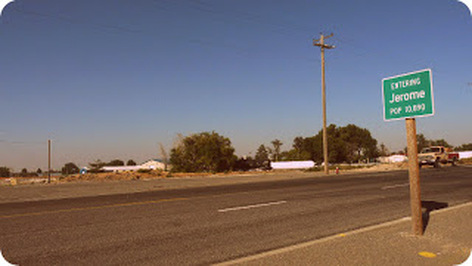 Twenty years.
Twenty years.
Twenty years since we set off to become that something more, to create the new people we held in the dreams of our hearts. And in those twenty years, we created
ourselves anew so many times: cashier, engineer, homemaker, soldier, admin,
entrepreneur, artist, manager, teacher. Along this road, in the throes of the journey, we were aided by the wisdom and the folly of hundreds as we retooled our dreams to match reality…or reality to match our dreams. Twenty years.
Twenty years.
Twenty years into the journey we return. We come in the guise of middle age, wearing the dust of so long a road, so many selves created and discarded. We come wrapped in the critique and the support of the hundreds we’ve met along the way. But for all their love and advice, they could never truly know all of who we are. They were not there when we began:
Amidst canyon and sagebrush, in the cradle of a one-stoplight town.
Among those who helped shape our original story.
Among friends.
Welcome home.
So Spake Me…
There it is. My own personal creation story, my myth. And it is so very startling how archetypal the actors, events, the places of our legends become in just twenty short years. My memories have become aged snapshots, grainy and uncertain in their detail. Only the most vivid of the defining moments remain and as I gaze back at them in my mind, I can’t help but wonder how much of the truth remains after so many retellings.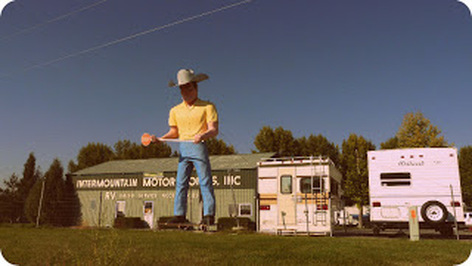 I wrote Mo’s speech as the welcome piece for the reunion book, looking forward to the reunion, looking at those snapshot memories anew. With the fears of youth set to the side, curiosity rose up in its place. Slowly, steadily my classmates transformed into one hundred and thirty-four books I had never finished and “What happened next?” became the nagging question tugging at my mind every time I stumbled across a Facebook post, an old photo tucked in an worn children’s game, or a dusty yearbook I’d glanced past for years without seeing.
I wrote Mo’s speech as the welcome piece for the reunion book, looking forward to the reunion, looking at those snapshot memories anew. With the fears of youth set to the side, curiosity rose up in its place. Slowly, steadily my classmates transformed into one hundred and thirty-four books I had never finished and “What happened next?” became the nagging question tugging at my mind every time I stumbled across a Facebook post, an old photo tucked in an worn children’s game, or a dusty yearbook I’d glanced past for years without seeing.  And when the nights came?
And when the nights came?
The stories were more fascinating than I could have possibly expected. Probably because they mattered to me. These people, I knew how hard they had to work, how far they had to climb to get where they were now. And the peaks they had conquered! Business owners, Air Force pilots, PhDs, researchers, mothers, fathers, husbands, wives, flying high in the big city, settling cozy in the small towns, even planting roots in our own hometown to keep her thriving.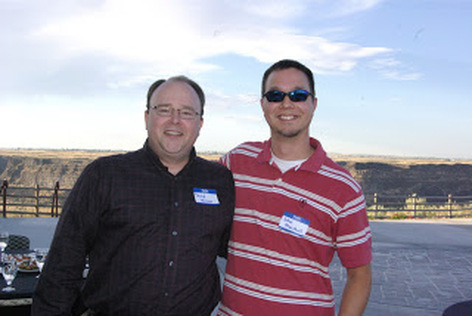 So many stories. Each story so new and yet so familiar. So many glimpses at the archetype I had become in my classmates’ own legends—the girl I had once been seen from new eyes. Each glimpse so surprising and so sweet.
So many stories. Each story so new and yet so familiar. So many glimpses at the archetype I had become in my classmates’ own legends—the girl I had once been seen from new eyes. Each glimpse so surprising and so sweet.  And when the nights were over?
And when the nights were over?
I left with a bit of sorrow at the stories left unheard, at the renewed connections I knew would fade once more. I left missing my people.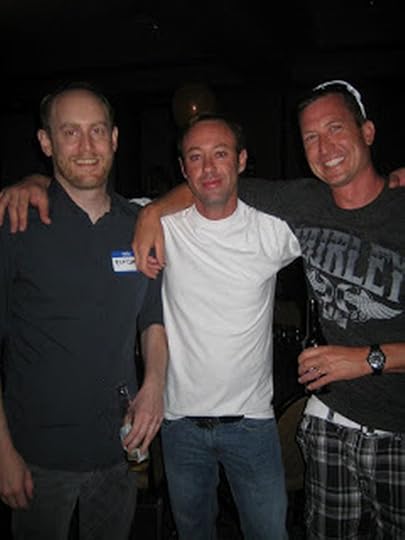 But I also left happy.
But I also left happy.
I am so proud of the people I come from, how they have grown no matter what path they chose.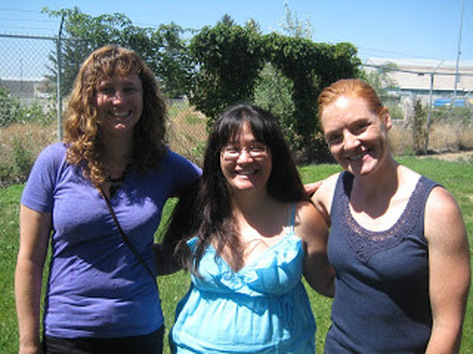 When these images, too, become faded with age, the details blurred and uncertain, I hope I can still draw from my myth, from my memory, this timeless truth: I come from good people. Good people who are still out there in the world spinning their fascinating stories and sometime soon perhaps I will get to hear more.
When these images, too, become faded with age, the details blurred and uncertain, I hope I can still draw from my myth, from my memory, this timeless truth: I come from good people. Good people who are still out there in the world spinning their fascinating stories and sometime soon perhaps I will get to hear more.
And that brings me the profoundest comfort.
Welcome home.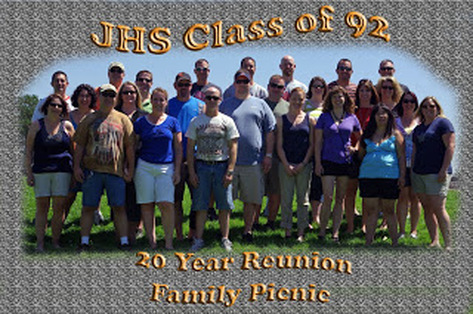
Twenty years.
Twenty years since we shared the journey of childhood together, since the stories of our lives were so bound up in one another that we gave shape to each other, to
the people we would become. Amidst canyon and sagebrush, in the cradle of a
one-stoplight town, we began.
 Twenty years.
Twenty years.
Twenty years since we set off to become that something more, to create the new people we held in the dreams of our hearts. And in those twenty years, we created
ourselves anew so many times: cashier, engineer, homemaker, soldier, admin,
entrepreneur, artist, manager, teacher. Along this road, in the throes of the journey, we were aided by the wisdom and the folly of hundreds as we retooled our dreams to match reality…or reality to match our dreams.
 Twenty years.
Twenty years.
Twenty years into the journey we return. We come in the guise of middle age, wearing the dust of so long a road, so many selves created and discarded. We come wrapped in the critique and the support of the hundreds we’ve met along the way. But for all their love and advice, they could never truly know all of who we are. They were not there when we began:
Amidst canyon and sagebrush, in the cradle of a one-stoplight town.
Among those who helped shape our original story.
Among friends.
Welcome home.
So Spake Me…
There it is. My own personal creation story, my myth. And it is so very startling how archetypal the actors, events, the places of our legends become in just twenty short years. My memories have become aged snapshots, grainy and uncertain in their detail. Only the most vivid of the defining moments remain and as I gaze back at them in my mind, I can’t help but wonder how much of the truth remains after so many retellings.
 I wrote Mo’s speech as the welcome piece for the reunion book, looking forward to the reunion, looking at those snapshot memories anew. With the fears of youth set to the side, curiosity rose up in its place. Slowly, steadily my classmates transformed into one hundred and thirty-four books I had never finished and “What happened next?” became the nagging question tugging at my mind every time I stumbled across a Facebook post, an old photo tucked in an worn children’s game, or a dusty yearbook I’d glanced past for years without seeing.
I wrote Mo’s speech as the welcome piece for the reunion book, looking forward to the reunion, looking at those snapshot memories anew. With the fears of youth set to the side, curiosity rose up in its place. Slowly, steadily my classmates transformed into one hundred and thirty-four books I had never finished and “What happened next?” became the nagging question tugging at my mind every time I stumbled across a Facebook post, an old photo tucked in an worn children’s game, or a dusty yearbook I’d glanced past for years without seeing.  And when the nights came?
And when the nights came? The stories were more fascinating than I could have possibly expected. Probably because they mattered to me. These people, I knew how hard they had to work, how far they had to climb to get where they were now. And the peaks they had conquered! Business owners, Air Force pilots, PhDs, researchers, mothers, fathers, husbands, wives, flying high in the big city, settling cozy in the small towns, even planting roots in our own hometown to keep her thriving.
 So many stories. Each story so new and yet so familiar. So many glimpses at the archetype I had become in my classmates’ own legends—the girl I had once been seen from new eyes. Each glimpse so surprising and so sweet.
So many stories. Each story so new and yet so familiar. So many glimpses at the archetype I had become in my classmates’ own legends—the girl I had once been seen from new eyes. Each glimpse so surprising and so sweet.  And when the nights were over?
And when the nights were over?I left with a bit of sorrow at the stories left unheard, at the renewed connections I knew would fade once more. I left missing my people.
 But I also left happy.
But I also left happy. I am so proud of the people I come from, how they have grown no matter what path they chose.
 When these images, too, become faded with age, the details blurred and uncertain, I hope I can still draw from my myth, from my memory, this timeless truth: I come from good people. Good people who are still out there in the world spinning their fascinating stories and sometime soon perhaps I will get to hear more.
When these images, too, become faded with age, the details blurred and uncertain, I hope I can still draw from my myth, from my memory, this timeless truth: I come from good people. Good people who are still out there in the world spinning their fascinating stories and sometime soon perhaps I will get to hear more. And that brings me the profoundest comfort.
Welcome home.

Published on September 29, 2012 00:04
September 28, 2012
On the Occassion of My Twentieth High School Reunion
SoSpake Mo…
Twenty years.
Twentyyears since we shared the journey of childhood together, since the stories ofour lives were so bound up in one another that we gave shape to each other, to
the people we would become. Amidst canyon and sagebrush, in the cradle of a
one-stoplight town, we began.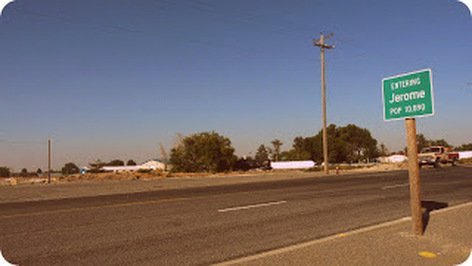 Twentyyears.
Twentyyears.
Twentyyears since we set off to become that something more, to create the new peoplewe held in the dreams of our hearts. And in those twenty years, we created
ourselves anew so many...
Twenty years.
Twentyyears since we shared the journey of childhood together, since the stories ofour lives were so bound up in one another that we gave shape to each other, to
the people we would become. Amidst canyon and sagebrush, in the cradle of a
one-stoplight town, we began.
 Twentyyears.
Twentyyears.
Twentyyears since we set off to become that something more, to create the new peoplewe held in the dreams of our hearts. And in those twenty years, we created
ourselves anew so many...
Published on September 28, 2012 23:04
The Story of Place
In the dark corners and the quiet corridors, we find the living bits of legend that connect us through time...The Story of Place
- Tonya Macalino's profile
- 50 followers



